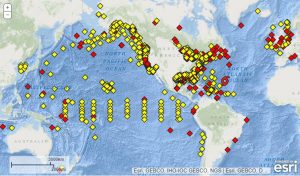Burger and fries, wine and cheese, peanut butter and jelly … some things just go better together. For organizations embarking on digital transformation, AI and IoT just go better together.
These two distinct technologies; AI and IoT (or AIoT) are a natural fit. To take an analogy from the human body; AI without IoT is like a brain without senses to collect data from the world around it. Conversely, IoT without AI is like senses that have no way to distill intelligence from data. Neither are good scenarios.
Human senses and IoT sensors
Humans have five senses: sight (vision); hearing (audition); taste (gustation); smell (olfaction); and touch (somatosensation). Note: There's some debate on exactly how many senses we have, but that's beyond the scope of this blog.
We're limited in the number of senses we possess, and we're limited by the proximity necessary to use our senses. In other words, we can't sense the temperature of an object in another room. Our sensor in this case, our skin, has to be in close vicinity to the object in order to discern any information about it.
But an AIoT system can potentially have an unlimited number of sensors that collect significantly more complex data across larger distances. For example, the National Data Buoy Center collects data from 1,355 buoys located in oceans around the world (see image below). This data is analyzed for patterns and used in a multitude of maritime applications. This collection of buoys can be considered an AIoT system. It has the ability to detect events happening around the world so that you can divert shipping traffic or move emergency services to areas of concern.

Intelligence and optimization
The human brain is a complex organ which we don't yet fully understand. The brain does the heavy lifting for processing data collected by our senses and determining action. These range from complex, emotion-driven actions, such as purchasing a car we can't afford, to involuntary actions, such as breathing. All of these decisions happen in the central nervous system.
However, there's a parallel system called the peripheral nervous system, which is responsible for taking different types of actions. For example, dropping a hot plate when our hand touches it, or increasing the frequency of our heartbeat during a run.
So why the need for a whole different system? The answer is optimization. The human body optimizes decision making centers based on the needs of the body. Some situations require a quicker reaction than the central nervous system can provide, while others are too mundane for the massive horsepower of the brain.
AIoT is no different. The application's needs will determine where decisions are made: In the cloud, in-stream, or at the edge (on the IoT device itself). For example, an AIoT system that applies a truck's brakes when it detects an obstacle will need to make decisions in-stream due to the low-latency requirements of the application.
SAS and Jason Mann invite you to attend the 2019 IoT Solutions World Congress in Barcelona. See our keynote presentations, featured sessions in IoT and Health Care Tracks and meet us and our IoT partners at booth C311.
Volvo Trucks and remote diagnostics with AIoT
Consider Volvo Trucks, which provides transport solutions for professional logistics operations around the globe. In 2017, more than 112,000 trucks were delivered, many featuring advanced sensors and analytics as part of Volvo's Remote Diagnostics solution. This proactive diagnostics and monitoring solution can identify critical engine or transmission issues.
Sensors embedded in the truck collect streaming data in real-time. Data points include truck location, altitude, ambient air temperature, gear position, RPM level and torque load. This data is analyzed for patterns, not only on possible failure, but also for insights into optimization and reducing costs. In short, the truck becomes an AIoT system that can speed Volvo Trucks' journey towards digital transformation.
Read more about how SAS is helping Volvo Trucks with an AIoT solution.
Considerations for your AIoT solution
When designing your AIoT solution, consider the needs of the application. In general, low-latency, localized applications will drive an in-stream or edge AIoT solution. When sensors are spread across a larger geographical area, it will drive a cloud-based AIoT solution. As capability and complexity of the solutions grow, your AIoT system may grow to encompass all three: In-cloud, in-stream or at the edge.
Whatever your needs are from an AIoT application, SAS can help bring the two technologies together to accelerate your digital transformation story.
Unlock the full potential of IoT with AI – download the white paper